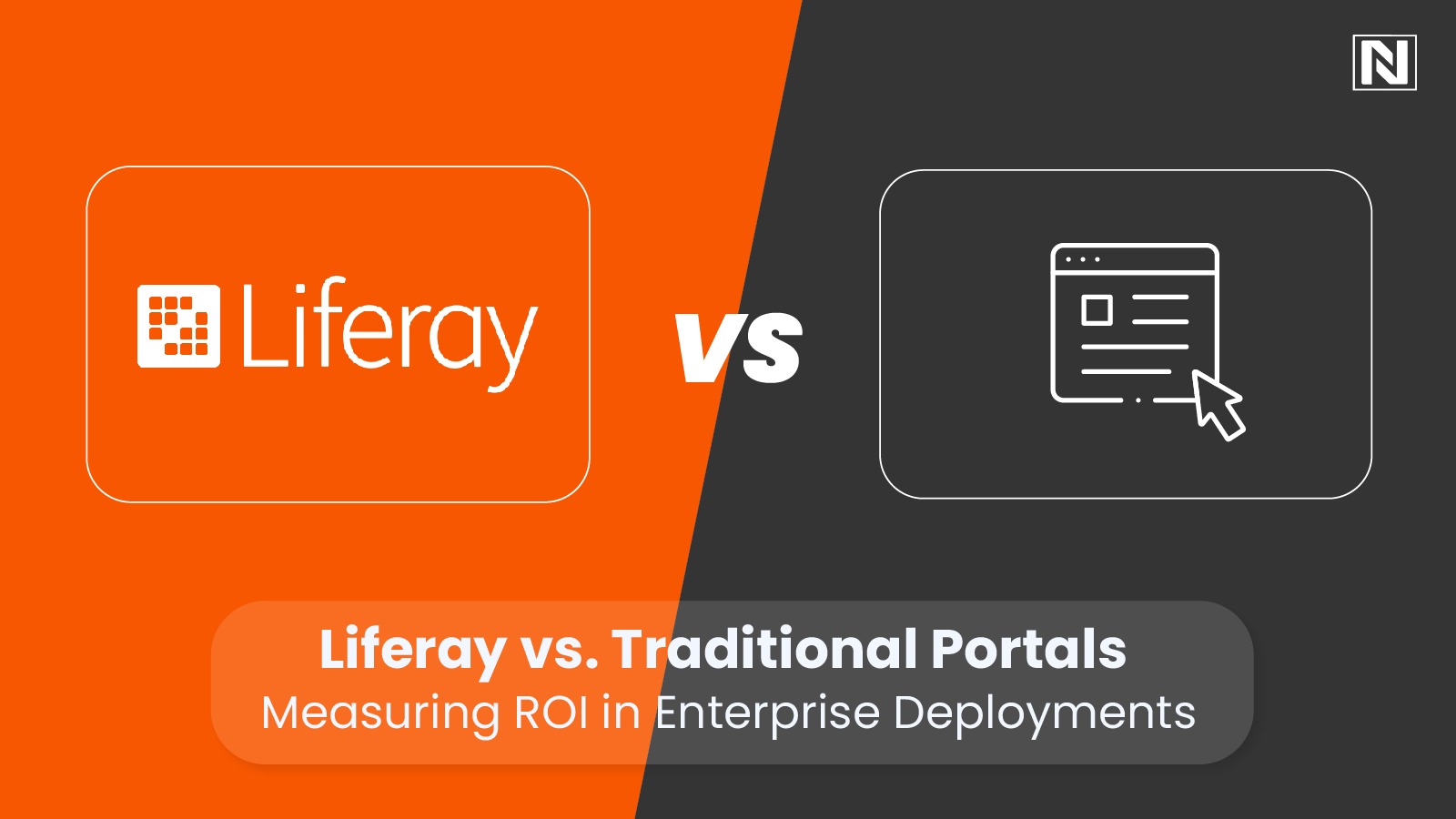
Enterprises rely heavily on portals to streamline operations, enhance collaboration, and improve customer engagement. However, not all portal solutions are created equal. When comparing Liferay vs. Traditional Portals, organizations must evaluate not just features but also long-term return on investment (ROI).
Traditional portals have been around for decades, offering basic content management and user access controls. However, modern solutions like Liferay Portals bring agility, scalability, and advanced integration capabilities that legacy systems struggle to match. This blog explores the key differences between Liferay vs. Traditional Portals, their impact on enterprise deployments, and how businesses can measure ROI effectively.
Understanding Traditional Portals: Strengths and Limitations
Traditional Portals, such as those built on older Java-based frameworks or proprietary systems, were designed primarily for static content delivery and basic user authentication. They served as gateways to enterprise applications but often lacked flexibility.
Key Characteristics of Traditional Portals:
- Monolithic Architecture – Difficult to scale or modify without significant development effort.
- Limited Integration – Often require custom coding to connect with modern SaaS and cloud applications.
- High Maintenance Costs – Frequent patches, security updates, and infrastructure overhead increase TCO (Total Cost of Ownership).
- Poor User Experience – Outdated UI/UX frameworks lead to low adoption rates among employees and customers.
While these portals may still function, their rigidity makes them less viable in a fast-evolving digital ecosystem.
Liferay Portals: A Modern Alternative
Liferay Portals represent a shift toward open-source, modular, and cloud-ready solutions. Liferay DXP (Digital Experience Platform) goes beyond basic portal functionality, offering:
Advantages of Liferay Over Traditional Portals:
1. Flexible Architecture
- Built on microservices, enabling seamless customization and scalability.
- Supports hybrid and multi-cloud deployments, reducing vendor lock-in.
2. Superior Integration Capabilities
- REST APIs, headless architecture, and out-of-the-box connectors for ERP, CRM, and marketing tools.
- Reduces dependency on custom development, lowering long-term costs.
3. Enhanced User Experience
- Modern, responsive design with drag-and-drop widgets and personalization features.
- Higher engagement rates among internal users and customers.
4. Lower Total Cost of Ownership (TCO)
- Open-source foundation reduces licensing fees.
- Automated updates and cloud-native deployment minimize infrastructure costs.
5. Security & Compliance
- Built-in security features like SSO, role-based access, and GDPR compliance tools.
Measuring ROI: Liferay vs. Traditional Portals
When evaluating Liferay vs. Traditional Portals, enterprises must consider both quantitative and qualitative ROI factors.
1. Cost Savings & Efficiency Gains
- Traditional Portals often require expensive customizations, leading to higher development and maintenance costs.
- Liferay’s modular approach reduces time-to-market for new features, improving operational efficiency.
ROI Metric:
- Reduced Development Costs – Fewer custom integrations needed.
- Lower Infrastructure Costs – Cloud deployment eliminates on-premise server expenses.
2. Employee Productivity & Adoption
- Traditional systems with clunky interfaces lead to low user adoption.
- Liferay’s intuitive UI and collaboration tools (e.g., document sharing, workflows) enhance productivity.
ROI Metric:
- Reduced Training Time – Easier navigation decreases onboarding costs.
- Higher Engagement Rates – Employees spend less time navigating inefficient systems.
3. Customer Experience & Revenue Impact
- Traditional Portals struggle with personalization, leading to poor customer retention.
- Liferay’s AI-driven recommendations and omnichannel support improve conversions.
ROI Metric:
- Higher Conversion Rates – Personalized experiences drive sales.
- Reduced Customer Support Costs – Self-service portals decrease ticket volumes.
4. Scalability & Future-Proofing
- Legacy portals often require complete overhauls to support business growth.
- Liferay’s cloud-native design allows seamless scaling without downtime.
ROI Metric:
- Avoided Migration Costs – No need for costly replatforming in 3-5 years.
- Faster Feature Deployment – Agile updates keep businesses competitive.
Conclusion
The debate between Liferay vs. Traditional Portals boils down to agility, cost efficiency, and long-term scalability. While legacy systems may still function, their limitations in integration, user experience, and maintenance make them a poor investment for forward-thinking enterprises.
For decision-makers evaluating ROI:
- Choose Liferay if you need a future-proof, cost-efficient, and high-engagement portal.
- Avoid Traditional Portals if scalability, cloud readiness, and innovation are priorities.
By adopting Liferay Portals, businesses not only reduce costs but also position themselves for digital transformation success.
Frequently Asked Questions
What are the key differences between Liferay vs. Traditional Portals?
Traditional Portals are monolithic, hard to scale, and lack modern integrations. Liferay Portals offer microservices architecture, cloud readiness, and better UX, making them more flexible and cost-effective.
How does Liferay improve ROI compared to Traditional Portals?
Liferay reduces TCO with open-source licensing, faster deployments, and lower maintenance costs. It also boosts productivity and customer engagement, directly impacting revenue.
Are Traditional Portals still viable for enterprises?
While they still function, Traditional Portals struggle with scalability, outdated UX, and high customization costs. Modern businesses benefit more from Liferay’s agility and integrations.
Can Liferay integrate with legacy enterprise systems?
Yes, Liferay Portals support seamless integration with ERP, CRM, and legacy apps via REST APIs and pre-built connectors, unlike Traditional Portals, which often require custom coding.
What security advantages does Liferay offer over Traditional Portals?
Liferay provides built-in security features like SSO, GDPR compliance, and role-based access, whereas Traditional Portals often need third-party add-ons, increasing complexity and cost.